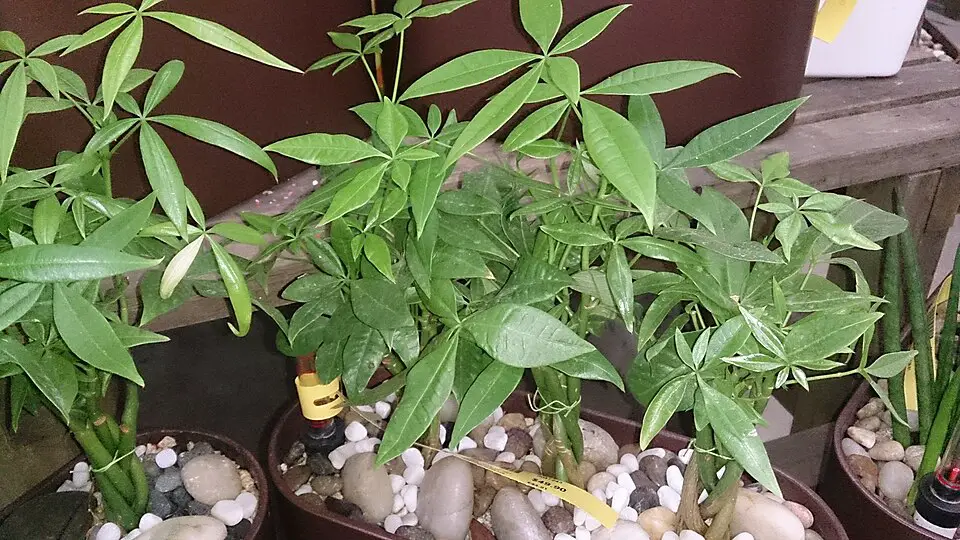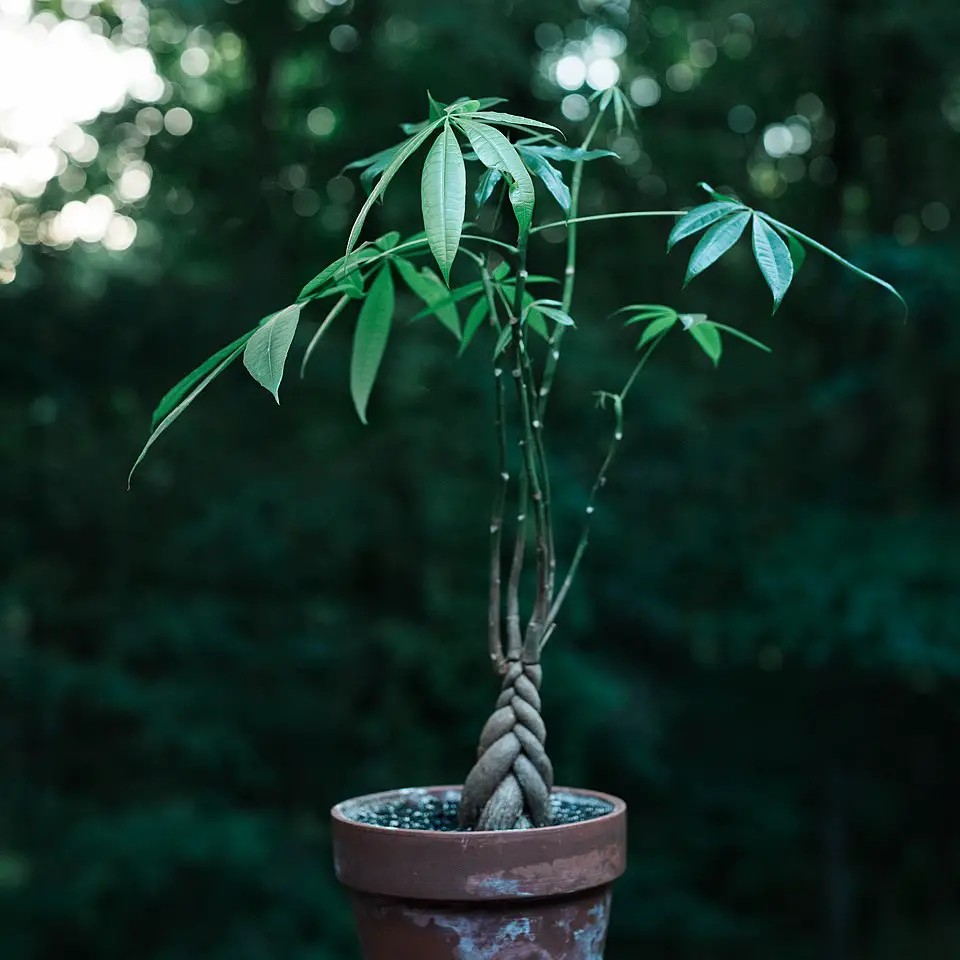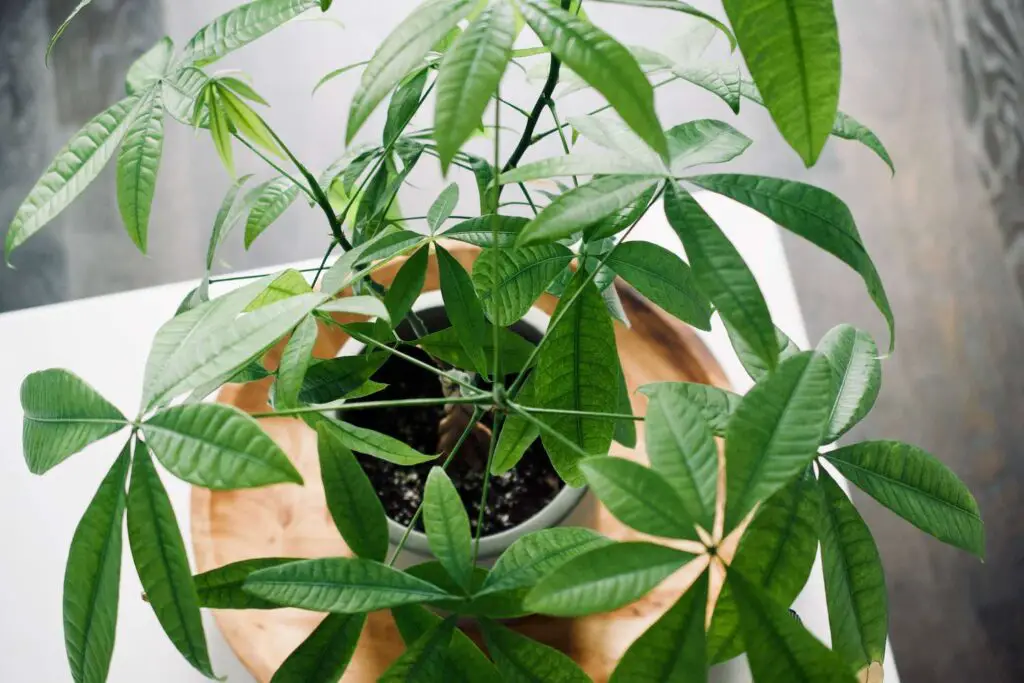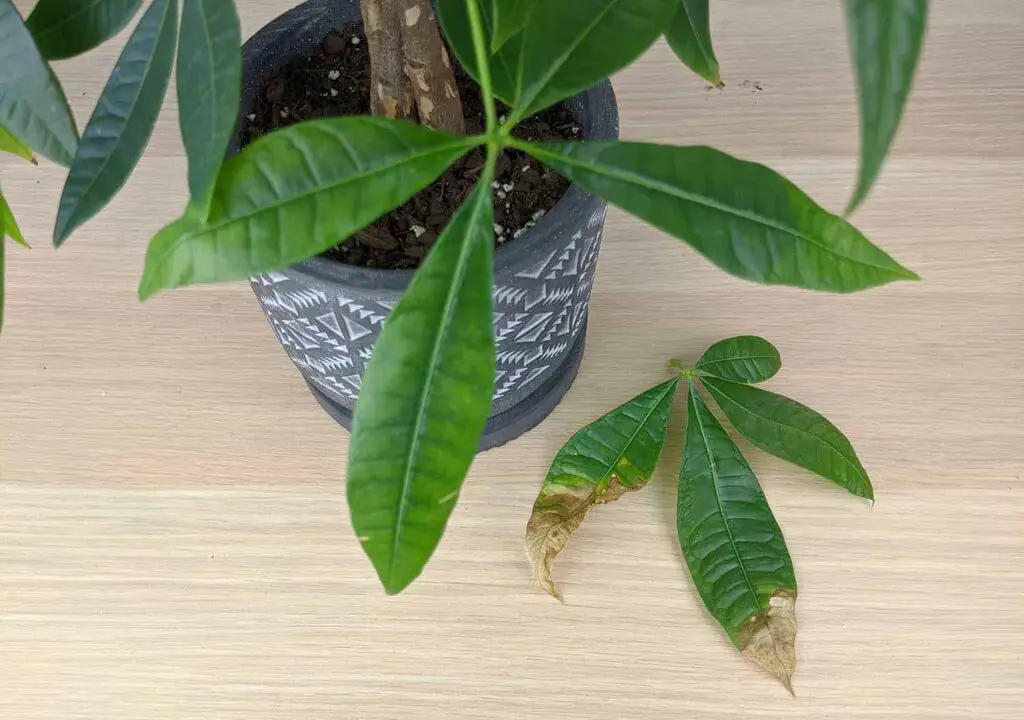The Money Tree plant, known for its braided trunk and lush leaves, is a popular choice among indoor gardeners. Braiding the stems of a Money Tree can enhance its aesthetic appeal and promote healthy growth. This guide will walk you through the braiding process step-by-step, making it easy for beginners to follow.
Understanding the Money Tree Plant
The Money Tree, scientifically known as Pachira aquatica, is native to Central and South America. In many cultures, it is considered a symbol of good fortune and prosperity. The plant typically features long, slender stems and palmate leaves, which can grow quite large when given the proper care.

When grown indoors, Money Trees can reach heights of three to six feet. They thrive in bright, indirect light and prefer to be watered when the soil feels dry. Given these conditions, they make excellent houseplants.
One of the most visually striking characteristics of the Money Tree is its braided trunk. Braiding the stems not only creates an attractive appearance but can also help keep the plant upright as it matures. The process is simple and can be done by anyone with a little patience and care.
Materials Needed for Braiding
Before starting the braiding process, gather the necessary materials. Having everything prepared will make the process smoother and more enjoyable. Here is a list of items you will need:

- Money Tree plant with multiple stems
- Soft cloth or gloves (to protect your hands)
- Twine or gardening wire (optional, for securing the braid)
- Pruning shears (for maintenance)
- Watering can (for post-braiding care)
Choosing the Right Time to Braid
The best time to braid your Money Tree is during its active growth period, typically in spring or early summer. During this time, the plant is more flexible and easier to manipulate. Additionally, braiding when the plant is healthy can reduce stress on the stems.
Step-by-Step Braiding Process
Now that you have your materials ready and know when to braid, follow these steps to create a beautiful braid with your Money Tree:
- Select the Stems: Choose three to five healthy stems. Ensure they are of similar thickness and length for an even braid.
- Prepare the Stems: Gently remove any leaves from the lower parts of the stems where you will braid them. This helps prevent damages and allows for better visibility during braiding.
- Start Braiding: Begin at the base of the stems. Take the leftmost stem and cross it over the middle stem. Then take the rightmost stem and cross it over the new middle stem.
- Continue the Pattern: Repeat this pattern until you reach the desired height. Make sure not to pull too tightly, as this can damage the stems.
- Secure the Braid: Once you have reached the top, gently tie off the braid at the base with twine or gardening wire. This helps maintain its shape as it grows.
- Trim if Necessary: Use pruning shears to trim any uneven stems or excess foliage. This keeps your Money Tree looking neat.
Post-Braiding Care
After braiding, it is essential to care for your Money Tree properly. Here are some tips to ensure your plant thrives:

- Water your plant thoroughly after braiding but avoid overwatering.
- Place your Money Tree in a location with bright, indirect sunlight.
- Monitor for pests and signs of stress, adjusting care as needed.
- Consider fertilizing every few months during the growing season to promote healthy growth.
Following these steps will not only enhance the beauty of your Money Tree but also contribute to its overall health and longevity.
Common Issues and Troubleshooting
Even with proper care, Money Trees can face several issues. Understanding these problems can help you address them promptly, ensuring your plant remains healthy and vibrant. Here are some common issues you may encounter:
Leaf Yellowing
Yellowing leaves can indicate various problems, primarily related to watering or light conditions. Here are some potential causes:
- Overwatering: Too much water can lead to root rot, causing leaves to turn yellow and drop. Ensure the soil dries out between waterings.
- Underwatering: Conversely, if the plant is not receiving enough water, it may also exhibit yellowing leaves. Check soil moisture regularly.
- Insufficient Light: Money Trees need bright, indirect sunlight. If they are not getting enough light, leaves may yellow. Move the plant closer to a light source if necessary.
Pest Infestations
Money Trees can attract pests such as spider mites, aphids, and mealybugs. Regularly inspecting your plant helps catch infestations early. Here are some signs of pest problems:

- Webbing: Look for fine webbing on leaves, which indicates spider mites.
- Sticky Residue: A sticky substance on the leaves may suggest aphids or mealybugs.
- Visible Bugs: Inspect under leaves and along stems for any visible insects.
If you notice pests, treat your Money Tree promptly. You can use insecticidal soap or neem oil as effective treatments. Ensure that you follow the manufacturer’s instructions for application.
Propagating Your Money Tree
If you want to expand your collection or share with friends, propagating a Money Tree is a rewarding process. Here are the steps to successfully propagate your plant:
- Select a Healthy Stem: Choose a healthy stem from your existing Money Tree. It should be at least six inches long and have several leaves attached.
- Cut the Stem: Use clean pruning shears to make a clean cut below a leaf node. This facilitates root growth.
- Let it Callous: Allow the cut end of the stem to dry for a few hours or overnight. This helps prevent rot when planted.
- Plant the Cutting: Fill a small pot with well-draining soil. Plant the cutting about an inch deep. Water it lightly to settle the soil.
- Create Humidity: Cover the pot with a plastic bag or place it in a greenhouse until roots develop. This maintains humidity levels.
- Transplant when Ready: After a few weeks, check for root growth by gently tugging on the stem. Once you feel resistance, it’s ready to be transplanted into a larger pot.
Enhancing Your Money Tree’s Environment
The environment in which your Money Tree grows plays a critical role in its health. Here are some tips to enhance its surroundings:
- Humidity Levels: Money Trees enjoy humidity. If your home is dry, consider using a humidifier or placing a tray of water near the plant to increase moisture in the air.
- Temperature Control: Keep your Money Tree in an area with stable temperatures between 65°F and 75°F (18°C – 24°C). Avoid placing it near drafts or heating vents.
- Regular Dusting: Dust can accumulate on leaves, affecting photosynthesis. Gently wipe the leaves with a damp cloth every few weeks to keep them clean.
Cultural Significance of the Money Tree
The Money Tree is not just a beautiful houseplant; it also holds cultural significance in various traditions. In Feng Shui, for instance, it is believed to bring good luck and prosperity to its owner. Here are some cultural aspects related to the Money Tree:
- Symbol of Wealth: Many people place Money Trees in their homes or businesses as a symbol of financial prosperity.
- Gift-Giving Tradition: Giving a Money Tree as a gift is common during housewarming parties or business openings, symbolizing good fortune for new beginnings.
- Ceremonial Uses: In some cultures, Money Trees are used in ceremonies to attract wealth or blessings during significant life events.
Understanding these cultural meanings can deepen your appreciation for this unique plant and enhance your experience as a gardener.
Choosing the Right Pot for Your Money Tree
C
hoosing the right pot for your Money Tree is crucial for its growth and health. The pot not only affects the aesthetics of the plant but also plays a significant role in drainage, root development, and overall care. Here are some tips on selecting an appropriate pot:
Material Considerations
The material of the pot can influence moisture retention and root health. Common pot materials include:
- Terracotta: This porous material allows for good airflow and drainage. However, it dries out more quickly, requiring more frequent watering.
- Plastic: Lightweight and often less expensive, plastic pots retain moisture well. They are a good option for beginners, but ensure they have drainage holes.
- Ceramic: These pots come in various designs and colors. While they can be heavy, they provide good insulation for the roots.
Size Matters
Choosing the right size pot is essential. A pot that is too small can restrict root growth, while one that is too large may retain excess moisture. Here are some guidelines:
- The pot should be about 2 inches larger in diameter than the current root ball.
- Avoid pots that are excessively large, as they can lead to overwatering issues.
- Consider the height of the pot as well. A deeper pot may be beneficial if your Money Tree has long roots.
Fertilizing Your Money Tree
Regular fertilization can significantly enhance the growth and health of your Money Tree. Understanding when and how to fertilize is key to maintaining a vibrant plant.
Types of Fertilizers
There are various types of fertilizers available, and choosing the right one is important:
- Liquid Fertilizers: These are easy to apply and can be mixed with water for convenient use. They provide immediate nutrients to the plant.
- Granular Fertilizers: These slow-release fertilizers are ideal for providing nutrients over time. They are applied to the soil surface and break down gradually.
- Organic Fertilizers: Options like compost or worm castings offer a natural way to enrich the soil without chemicals.
Application Tips
When fertilizing your Money Tree, consider the following tips:
- Frequency: Fertilize every 4-6 weeks during the growing season (spring and summer). Reduce frequency during fall and winter when growth slows.
- Dilution: If using liquid fertilizer, dilute it to half-strength to avoid over-fertilization.
- Watering After Fertilizing: Always water your Money Tree after applying fertilizer to help distribute nutrients evenly.
Repotting Your Money Tree
Over time, your Money Tree may outgrow its pot, necessitating repotting. This process helps refresh the soil and provides more space for root growth. Here’s how to repot your plant effectively:
When to Repot
Signs that your Money Tree needs repotting include:
- Roots are growing out of the drainage holes.
- The plant appears top-heavy or leans to one side.
- The soil dries out quickly after watering.
Repotting Steps
- Select a New Pot: Choose a slightly larger pot with good drainage holes.
- Prepare the Plant: Water your Money Tree a day before repotting to minimize stress on the roots.
- Remove from Old Pot: Gently slide the plant out of its current pot. Tap the sides if it’s stuck.
- Inspect Roots: Check for any damaged or rotten roots and trim them away with clean shears.
- Add Fresh Soil: Place fresh potting mix in the bottom of the new pot, then position the plant at the same depth it was previously growing.
- Fill In Around Roots: Add more soil around the roots, pressing gently to eliminate air pockets. Water thoroughly after repotting.
Mistakes to Avoid with Money Trees
Carin
g for a Money Tree can be straightforward, but beginners often make common mistakes that can hinder growth. Here are some pitfalls to avoid:
- Overwatering: One of the most common mistakes is giving too much water. Always allow the top inch of soil to dry out before watering again.
- Poor Lighting Conditions: Avoid placing your Money Tree in direct sunlight, which can scorch its leaves. Instead, opt for bright, indirect light.
- Neglecting to Rotate Your Plant: Rotate your Money Tree regularly so all sides receive equal light exposure, promoting even growth.
Avoiding these mistakes will help ensure that your Money Tree remains healthy and thrives in your home environment.
Advanced Care Tips for Your Money Tree
Once you have mastered the basics of caring for your Money Tree and braiding its stems, you may want to explore advanced care techniques. These practices can enhance the plant’s growth and appearance significantly.
Pruning for Health and Aesthetics
Regular pruning not only keeps your Money Tree looking its best but also encourages healthy growth. Here are some tips for effective pruning:
- Timing: Prune during the growing season (spring and summer) for the best results. This allows the plant to recover quickly.
- Tools: Use clean, sharp pruning shears to make clean cuts. This reduces the risk of disease.
- Focus on Dead or Yellowing Leaves: Remove any dead or yellowing leaves first, as they can detract from the plant’s appearance.
- Shape the Plant: Trim back excessively long stems to maintain a balanced shape. This also encourages bushier growth.
Seasonal Adjustments
As the seasons change, so should your care routine. Here are some seasonal adjustments to consider:
- Spring: Increase watering as the plant begins to actively grow. Start fertilizing again if you stopped during winter.
- Summer: Monitor for pests as temperatures rise. Ensure adequate humidity levels to support growth.
- Fall: Gradually reduce watering as growth slows down. Prepare your plant for the upcoming winter months.
- Winter: Keep your Money Tree in a warmer area, away from cold drafts. Reduce watering further, as the plant will need less moisture.
Common Myths About Money Trees
As a popular houseplant, several myths surround the Money Tree that can lead to misunderstandings about its care. Here are a few common myths debunked:
- Myth 1: Money Trees Bring Instant Wealth: While many believe these plants attract wealth, they require proper care to thrive. Good fortune is a combination of plant health and personal effort.
- Myth 2: They Can Survive in Low Light: While they can tolerate lower light conditions, Money Trees thrive best in bright, indirect light. Prolonged low light can stunt their growth.
- Myth 3: Braiding is Only for Aesthetics: Although braiding enhances appearance, it also helps stabilize the stems as they grow taller, promoting a healthier structure.
Creating a Display with Your Money Tree
The Mon
ey Tree can be an attractive focal point in your home or office. Consider these ideas for displaying your plant:
- Choose the Right Location: Place your Money Tree in a spot where it can receive adequate light but is also seen and appreciated by everyone.
- Complementary Decor: Use decorative pots that match your interior decor style. This enhances the overall aesthetic appeal of the space.
- Add Companions: Consider pairing your Money Tree with other plants that have similar care needs for a beautiful indoor garden.
Final Thoughts
Caring for a Money Tree can be a rewarding experience, offering both beauty and cultural significance. By following the guidelines provided in this article, beginners can successfully braid their trees and maintain their health. Remember to monitor watering habits, provide adequate light, and avoid common mistakes to ensure your plant thrives.
The journey of growing a Money Tree is not just about nurturing a plant; it is about cultivating patience, learning from mistakes, and enjoying the process of gardening. With time, your Money Tree will flourish into a stunning centerpiece that brings joy and good fortune to your home.
As you become more experienced with plant care, don’t hesitate to explore other houseplants and create a diverse indoor garden that reflects your personality and style. Happy gardening!
